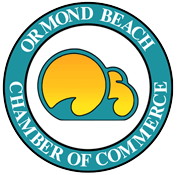You’re expanding into a new market, considering a joint marketing campaign, or maybe teaming up to bid on a bigger client. Whatever the trigger, forming a partnership is a major decision. When done right, collaborations can unlock growth, efficiency, and visibility for both parties. But without structure, many dissolve quickly — or worse, damage your reputation.
In this guide, we’ll break down how small business owners can collaborate effectively, avoid common pitfalls, and build lasting, mutually beneficial partnerships.
Why Partnerships Fail (And How You Can Avoid It)
Most failed business collaborations come down to unclear roles, mismatched goals, or unspoken assumptions. Think of a partnership like a shared project with stakes: if you don’t define success, resources, and responsibilities up front, you’re setting yourself up for misalignment.
A successful partnership starts not with ambition, but with alignment. That means defining:
-
What success looks like for each party
-
How revenue, leads, or responsibilities will be shared
-
What happens when the unexpected happens (like delays or disagreements)
This isn’t just good business sense — it’s foundational risk management. Tools like Trello or ClickUp can help maintain visibility on shared tasks, especially when working cross-team or remotely.
?? The Role of Clear Agreements in Collaboration
Setting expectations early is one of the most overlooked success drivers in small business partnerships. Without clearly defined responsibilities, both parties can interpret “collaboration” in very different ways.
Documenting roles, timelines, ownership of deliverables, and even exit terms upfront prevents misunderstandings and protects the relationship. This is where digital tools can help: services that offer guidelines for digital contract signatures streamline the process, add a layer of professionalism, and ensure both sides start on the same page — literally.
Clarity breeds trust. And trust is what gives partnerships staying power.
?? Practical Steps for Forming Effective Partnerships
Here’s a short action plan small business owners can follow when evaluating or formalizing a collaboration:
-
Define mutual goals. Are you co-marketing? Expanding reach? Bundling services?
-
Clarify target audiences. Overlap is fine, but differences must be acknowledged and leveraged.
-
Assign responsibilities. Be clear about who handles what, when, and how.
-
Discuss revenue or lead-sharing models. Don’t skip this — assumptions here cause friction.
-
Use lightweight agreements. Even for short-term pilots, put it in writing.
-
Schedule regular reviews. A monthly or quarterly check-in prevents misalignment over time.
-
Plan an off-ramp. If things don’t work out, you’ll both want a clean, respectful exit.
Tools like Airtable can be used to track shared deliverables and ownership across teams — especially useful for marketing-focused partnerships.
?? Table: Partnership Assessment Checklist
|
Evaluation Area |
Questions to Ask |
Notes |
|
Goal Alignment |
Do we want the same outcomes? |
Co-leads or referral-based? |
|
Audience Fit |
Do we serve the same type of customer? |
Complementary services? |
|
Capacity & Bandwidth |
Can each party deliver on time? |
Be honest here. |
|
Cultural Fit |
Are our brands and work styles compatible? |
Tone matters. |
|
Risk Tolerance |
How do we handle missed deadlines or changes? |
Get it in writing. |
If you're working with local service providers or chambers of commerce, using project templates from platforms like Notion can speed up this initial evaluation.
?? Quick Wins: Tools That Help Partnerships Run Smoothly
Here’s a short list of tools, services, and platforms (aside from your core CRM or email platform) that support collaboration, trust-building, and visibility:
-
Miro – Visual collaboration boards for mapping workflows or brainstorming remotely.
-
PandaDoc – Streamlines document creation, proposals, and contract workflows.
-
HubSpot Free CRM – Helpful for tracking partnership pipelines and shared opportunities.
-
Buffer – Social media scheduling for shared campaigns.
-
Calendly – Makes scheduling recurring syncs or partner strategy calls effortless.
Each tool plays a small but crucial role in reducing friction — and that’s exactly what helps collaborations last.
? Frequently Asked Questions (FAQ)
How do I know if a potential partner is the right fit?
Look for shared values, complementary offerings, and overlapping (but not identical) audiences. Start with a low-risk pilot before committing to anything long-term.
Should I work with a lawyer when forming a partnership?
If you're co-owning assets, revenue, or brand use — yes. For co-marketing or referral agreements, clear documentation via digital signature tools often suffices.
What are signs that a partnership isn’t working?
Frequent miscommunications, lack of follow-through, or unclear impact. If you’re doing all the work but sharing all the credit, revisit the terms.
How do I handle co-branding or joint campaigns?
Set design and messaging guidelines early. Use tools like Figma to align on assets.
?? A Simple Tool to Keep You Aligned
Taskade helps small business teams collaborate on shared projects in real time, with task assignments, notes, and calendars all in one clean interface. It's especially helpful when working with external partners who need visibility without full access to your systems.
?? Final Thought
A good partnership isn’t about splitting the pie — it’s about baking a bigger one together. Start small, communicate clearly, document thoroughly, and align on outcomes.
The tools are there. The next step is using them together.
Discover the vibrant business community of Ormond Beach and unlock exclusive opportunities by joining the Ormond Beach Chamber of Commerce today!

